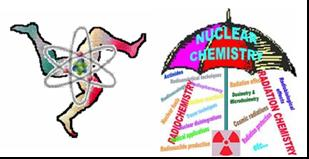Speaker
Dr
Yury Pokhitonov
(Khlopin Radium Institute)
Description
One of the most important conditions for the realization of the concept of closed nuclear fuel cycle consists in the availability of highly developed infrastructure, including reprocessing of spent nuclear fuel (SNF), and further utilization of the resulted waste. The major way for increasing the safety of radwastes management is the development of advanced technologies, which would enable to reprocess the whole volume of high-level waste (HLW) and to obtain the solid products offering high chemical stability which would be suitable for long-term monitored storage and/or final disposal.
At the same time another way to enhance the safety of solidified HLW storage and disposal is to apply a special coating on granulated wastes or to encapsulate solidified HLW using adequate materials. The main advantages of wastes reprocessing through the use of protective coatings are that this technique offers the possibility to immobilize the wastes in the form of solid products, which would be stable to leaching when contacting not only with water, but with other aggressive agents, for example, acids, as well. In the case of successful realization of R&D work package, which are being planned, the optimal parameters of the process ensuring an efficient localization of radioactive wastes will be selected, and the necessary recommendations for industrial use of developed technology will be generated.
The object of this work was to conduct experimental study on technology development to obtain protective covering at ceramic materials containing different radionuclides. Physicochemical characteristics of these materials (data on cesium leaching rate) are presented.
Another object of present work was the study on engineering solutions that could allow use "reactor" palladium for immobilization of long-lived radionuclides such as I-129 and TUE.
In the paper the results of experiments on synthesis of cermets on palladium metal base (with metal oxides and palladium iodide inclusion) are presented.
Obtained samples were examine by using of electronic-microscopy method. The data on leaching rate of europium and iodine from the samples with additional coverings are also presented.
Author
Dr
Yury Pokhitonov
(Khlopin Radium Institute)
Co-author
Vasiliy Babain
(Khlopin Radium Institute)
